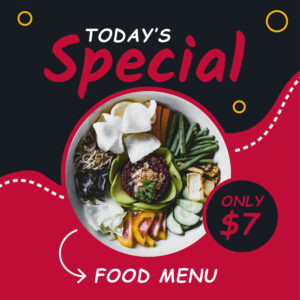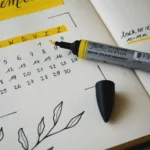Your website isn’t pulling its weight. Right now, it’s probably filled with fancy jargon, too many choices, and a maze-like navigation that sends visitors running for the “back” button. Sound familiar? You’re leaving money on the table—big time.
Think about it: Your website should be your hardest-working salesperson. It doesn’t need coffee breaks, vacations, or sleep. It should be converting strangers into clients 24/7, even while you’re binge-watching your favorite show.
Here’s the best part: You don’t need to start from scratch or spend a fortune on a redesign. A few smart tweaks can make all the difference. By using the right ChatGPT prompts, you can turn your website into a client-attracting machine. These prompts are easy to use, practical, and—most importantly—they actually work.” Just copy, paste, and tweak the square brackets in ChatGPT. Oh, and keep the same chat window open—it helps the AI maintain context and deliver even better responses.
So, are you ready to give your website a serious upgrade and start pulling in more clients? Great! Let’s jump into the first prompt and see how it can work for you..
Focus on One Powerful Pain Point
Most websites make a classic mistake: they try to be everything to everyone. They list a dozen services, describe every possible customer type, and end up resonating with… well, no one.
Here’s the secret: Focus on one pain point. That’s it. Just one.
Your dream customer has a specific problem that keeps them up at night. Maybe they’re frustrated, overwhelmed, or stuck. Your job is to show them you get it—better than anyone else. When you zero in on that one pain point, your website becomes a magnet for the right clients.
Here’s how ChatGPT can help:
Help me identify the single most compelling pain point for my target audience. My business offers [describe your products/services] to [describe your target audience]. Start by asking me questions about my clients’ biggest frustrations, what they’ve tried before, and where they feel stuck. Once we’ve nailed their challenges, help me craft website copy that focuses exclusively on this one pain point. Create a headline, subheadline, and three bullet points that speak directly to this problem and position my solution as the answer they’ve been searching for. Bonus: Suggest a call-to-action (CTA) that encourages them to take the next step.Let’s say you’re a life coach targeting overwhelmed working moms.
ChatGPT might ask:
- What’s their biggest daily struggle? (e.g., balancing work and family)
- What have they tried before? (e.g., time management apps, but nothing sticks)
- Where do they feel stuck? (e.g., guilt about not spending enough time with their kids)
Based on this, ChatGPT could generate:
- Headline: “Feeling Overwhelmed? Reclaim Your Time and Peace of Mind in Just 30 Days.”
- Subheadline: “Discover a proven system to balance work, family, and ‘me time’—without the guilt.”
- Bullet Points:
- Learn how to prioritize what truly matters.
- Ditch the overwhelm with simple, actionable steps.
- Create a schedule that works for you and your family.
- CTA: “Book Your Free Consultation Now and Start Your Journey to Balance!”
Create a Simple Qualifying Quiz
Not every website visitor is your ideal client—and that’s okay. Your goal isn’t to appeal to everyone; it’s to attract the right people. Think of your website traffic as a crowd at a concert. You don’t want to hand out backstage passes to everyone; you want to give them to the superfans who’ll truly value the experience.
A simple qualifying quiz is like a velvet rope for your website. It helps you filter out the “just browsing” crowd and guide your dream clients straight to you. Tools like RightMessage or Typeform can make this process seamless, but the magic lies in the questions you ask.
Here’s how ChatGPT can help you design a quiz that works like a charm:
Design a simple website quiz that qualifies visitors as potential clients. My ideal client is [describe your dream customer] who struggles with [key pain points]. Create 5 multiple-choice questions with just two answer options each. Each question should reveal something important about their situation, challenges, or readiness to buy. After the quiz questions, ask for my feedback. Then suggest how the results could segment visitors into different categories based on their fit and buying readiness. Finally, recommend personalized next steps I could offer each group to move them closer to becoming a client.Let’s say you’re a fitness coach targeting busy professionals who want to get in shape but struggle with consistency.
ChatGPT might create a quiz like this:Quiz Title: “Are You Ready to Transform Your Fitness Routine?”
Questions:
- How often do you work out right now?
- A) Rarely or never
- B) 1-2 times a week
- What’s your biggest fitness challenge?
- A) Finding time to exercise
- B) Staying motivated
- What’s your primary fitness goal?
- A) Losing weight
- B) Building muscle
- How do you feel about your current fitness level?
- A) Frustrated and ready for change
- B) Somewhat satisfied but want to improve
- Are you ready to invest in a personalized fitness plan?
- A) Yes, I’m ready to start now
- B) Not sure, I need more information
Segmentation and Next Steps:
- High Fit, High Readiness: Offer a free consultation or a discounted trial program.
- High Fit, Low Readiness: Send them a free guide or email series to build trust and educate them.
- Low Fit: Invite them to follow you on social media for free tips and updates.
Apply the “Make It Simple” Method
Let’s face it: people are busy. They don’t want more work—they want solutions that feel effortless. If your website makes working with you seem like a chore, visitors will bounce faster than a rubber ball.
Your goal? Strip away the complexity. Make taking the next step so easy that it feels like a no-brainer. Show them the shortest, straightest line between their problem and your solution.
Here’s how ChatGPT can help you simplify your website and onboarding process:
Analyze my current website call-to-action and client onboarding process for unnecessary complexity. I help clients [describe what you deliver], and my current process involves [describe your current steps]. Identify at least three ways I can simplify this process for potential clients. Then, create a new version of my main call-to-action and next steps to emphasize ease and simplicity. Use phrases that minimize perceived effort and maximize perceived value. My goal is to make working with me feel like the easiest decision they’ll make all week.
Let’s say you’re a graphic designer who helps small businesses create stunning logos.
Your current process involves:
- Filling out a lengthy contact form.
- Scheduling a discovery call.
- Receiving a proposal.
- Signing a contract and paying a deposit.
ChatGPT might suggest:
Ways to Simplify:
- Replace the lengthy form with a 3-question quiz to gauge their needs.
- Offer a “Quick Quote” button that provides a ballpark estimate instantly.
- Use a one-click scheduling tool (like Calendly) to book calls without back-and-forth emails.
New Call-to-Action:
Get a Stunning Logo in 3 Easy Steps:
- Tell us your vision (it only takes 2 minutes).
- Get a custom quote instantly.
- Approve the design and launch your brand. Ready to stand out? Start now!
Cut Ruthlessly Until Only Essentials Remain
Let’s take a page out of Google’s playbook. Their homepage has fewer than 30 words. Why? Because they know less is more.
Most websites make the mistake of bombarding visitors with walls of text that nobody reads. The truth is, every word on your website should earn its place. Every sentence should drive action. If it doesn’t immediately serve your visitor’s needs or push them closer to becoming a client, it’s got to go.
Here’s how ChatGPT can help you trim the fat and create razor-sharp website copy:
Help me apply minimalist principles to my website copy. I’ll paste the current text from my [homepage/about page/services page] below. Your job is to ruthlessly cut anything that doesn’t directly contribute to converting visitors into clients. Aim to reduce the word count by at least 20% while maintaining the core message and calls to action. Prioritize clarity over cleverness, simplicity over comprehensiveness. After cutting, suggest ways to make the remaining copy more impactful, such as stronger headlines, clearer CTAs, or more benefit-focused language. Here’s my current copy: [paste your website copy]
Let’s say you’re a financial advisor, and your current homepage copy looks like this:
Welcome to Smith Financial Services! We’ve been helping clients achieve their financial goals for over 20 years. Our team of experienced advisors is dedicated to providing personalized financial planning, investment management, retirement planning, and tax optimization services. We believe in building long-term relationships with our clients and helping them navigate the complexities of the financial world. Contact us today to schedule a free consultation!
ChatGPT’s Streamlined Version:
Achieve Your Financial Goals with Confidence.
For over 20 years, we’ve helped clients like you build wealth, plan for retirement, and optimize taxes.
Ready to simplify your financial life? Let’s talk.
Schedule your free consultation today!
What Changed:
- Cut generic fluff (“Welcome to,” “We believe in”).
- Focused on specific services and benefits.
- Added a stronger, action-oriented CTA.
Add Personality Hooks Throughout
Your website visitors are like speed daters—they make snap judgments in seconds. If your site is filled with generic corporate jargon, they’ll swipe left faster than you can say “conversion rate.”
But here’s the secret: Personality sells. A well-placed personality hook—a brief, authentic statement that reveals something unique about you or your approach—can stop visitors in their tracks. It’s like saying, “Hey, I’m not just another business. I’m a real person who gets you.”
These hooks create connection points that make visitors feel like they already know you. They transform your website from a digital brochure into a compelling introduction.
Here’s how ChatGPT can help you sprinkle personality throughout your site:
Create personality hooks (brief, authentic statements that reveal something unique about me or my approach that visitors can relate to) for my website. First, ask me questions about my unique approach, communication style, and what clients often say about working with me. Based on my answers, suggest 5 places on my website where I could inject personality (like my homepage intro, about page, service descriptions, etc.). For each location, write a short, authentic statement that captures my voice and creates an emotional connection. These should complement my professional expertise while making visitors feel like they’re getting to know the real me.
Let’s say you’re a career coach who helps introverts land their dream jobs.
ChatGPT might ask:
- What’s your unique approach to coaching? (e.g., “I focus on quiet strengths, not loud networking.”)
- How would you describe your communication style? (e.g., “Warm, encouraging, and a little nerdy about personality types.”)
- What do clients often say about working with you? (e.g., “You made me feel seen and confident for the first time.”)
“Career coaching for introverts who hate networking (but still want to land their dream job). Let’s find a way that works for you.”About Page:
“I’m not your typical career coach. I won’t tell you to ‘fake it till you make it.’ Instead, I’ll help you uncover your quiet strengths and use them to stand out—without selling your soul or your sanity.”Service Descriptions:
“Think of me as your career hype person, strategy guru, and interview prep coach—all rolled into one. (Bonus: I’ll never make you do awkward role-playing exercises.)”Testimonial Section:
“Clients call me ‘the introvert whisperer’—but honestly, I just believe everyone deserves a job that feels like a good fit, not a forced performance.”Contact Page:
“Ready to take the first step? Let’s chat. No pressure, no awkward small talk—just real talk about your career goals.”
Your Website, Reimagined: From Digital Card to Client Magnet.
Your website isn’t just a digital business card—it’s your 24/7 sales machine. But to make it work harder for you, it needs to connect, engage, and convert. That’s where these ChatGPT prompts come in.
Here’s the game plan:
- Focus on one powerful pain point to resonate deeply with your audience.
- Create simple qualifying quizzes to filter out the noise and find your perfect-fit clients.
- Apply the “make it simple” method to remove friction and make buying a no-brainer.
- Cut ruthlessly until only essentials remain, so every word drives action.
- Add personality hooks that build instant connection and make you unforgettable.
Your dream clients are out there right now, searching for exactly what you offer. The question is: Will they find you? And when they do, will they stay long enough to take the next step?
Don’t leave it to chance. Use these prompts to optimize your website today and turn it into a client-attracting powerhouse.












